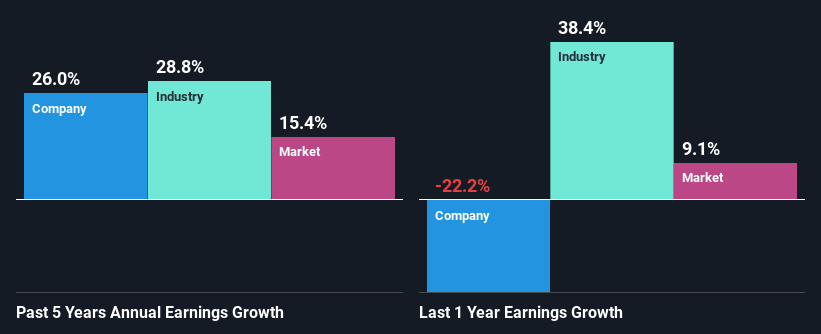Is Teradyne, Inc.'s (NASDAQ:TER) Latest Stock Performance A Reflection Of Its Financial Health?
Teradyne's (NASDAQ:TER) stock is up by a considerable 35% over the past three months. Given that the market rewards strong financials in the long-term, we wonder if that is the case in this instance. Specifically, we decided to study Teradyne's ROE in this article.
Return on Equity or ROE is a test of how effectively a company is growing its value and managing investors’ money. In short, ROE shows the profit each dollar generates with respect to its shareholder investments.
See our latest analysis for Teradyne
How To Calculate Return On Equity?
The formula for ROE is:
Return on Equity = Net Profit (from continuing operations) ÷ Shareholders' Equity
So, based on the above formula, the ROE for Teradyne is:
34% = US$767m ÷ US$2.3b (Based on the trailing twelve months to October 2022).
The 'return' is the profit over the last twelve months. Another way to think of that is that for every $1 worth of equity, the company was able to earn $0.34 in profit.
What Has ROE Got To Do With Earnings Growth?
We have already established that ROE serves as an efficient profit-generating gauge for a company's future earnings. Depending on how much of these profits the company reinvests or "retains", and how effectively it does so, we are then able to assess a company’s earnings growth potential. Assuming everything else remains unchanged, the higher the ROE and profit retention, the higher the growth rate of a company compared to companies that don't necessarily bear these characteristics.
Teradyne's Earnings Growth And 34% ROE
Firstly, we acknowledge that Teradyne has a significantly high ROE. Second, a comparison with the average ROE reported by the industry of 19% also doesn't go unnoticed by us. As a result, Teradyne's exceptional 26% net income growth seen over the past five years, doesn't come as a surprise.
We then performed a comparison between Teradyne's net income growth with the industry, which revealed that the company's growth is similar to the average industry growth of 29% in the same period.
Earnings growth is an important metric to consider when valuing a stock. It’s important for an investor to know whether the market has priced in the company's expected earnings growth (or decline). This then helps them determine if the stock is placed for a bright or bleak future. What is TER worth today? The intrinsic value infographic in our free research report helps visualize whether TER is currently mispriced by the market.
Is Teradyne Making Efficient Use Of Its Profits?
Teradyne has a really low three-year median payout ratio of 8.3%, meaning that it has the remaining 92% left over to reinvest into its business. So it looks like Teradyne is reinvesting profits heavily to grow its business, which shows in its earnings growth.
Additionally, Teradyne has paid dividends over a period of nine years which means that the company is pretty serious about sharing its profits with shareholders. Upon studying the latest analysts' consensus data, we found that the company is expected to keep paying out approximately 7.3% of its profits over the next three years. Accordingly, forecasts suggest that Teradyne's future ROE will be 35% which is again, similar to the current ROE.
Conclusion
Overall, we are quite pleased with Teradyne's performance. Specifically, we like that the company is reinvesting a huge chunk of its profits at a high rate of return. This of course has caused the company to see substantial growth in its earnings. Having said that, the company's earnings growth is expected to slow down, as forecasted in the current analyst estimates. To know more about the company's future earnings growth forecasts take a look at this free report on analyst forecasts for the company to find out more.
Have feedback on this article? Concerned about the content? Get in touch with us directly. Alternatively, email editorial-team (at) simplywallst.com.
This article by Simply Wall St is general in nature. We provide commentary based on historical data and analyst forecasts only using an unbiased methodology and our articles are not intended to be financial advice. It does not constitute a recommendation to buy or sell any stock, and does not take account of your objectives, or your financial situation. We aim to bring you long-term focused analysis driven by fundamental data. Note that our analysis may not factor in the latest price-sensitive company announcements or qualitative material. Simply Wall St has no position in any stocks mentioned.
Join A Paid User Research Session
You’ll receive a US$30 Amazon Gift card for 1 hour of your time while helping us build better investing tools for the individual investors like yourself. Sign up here

